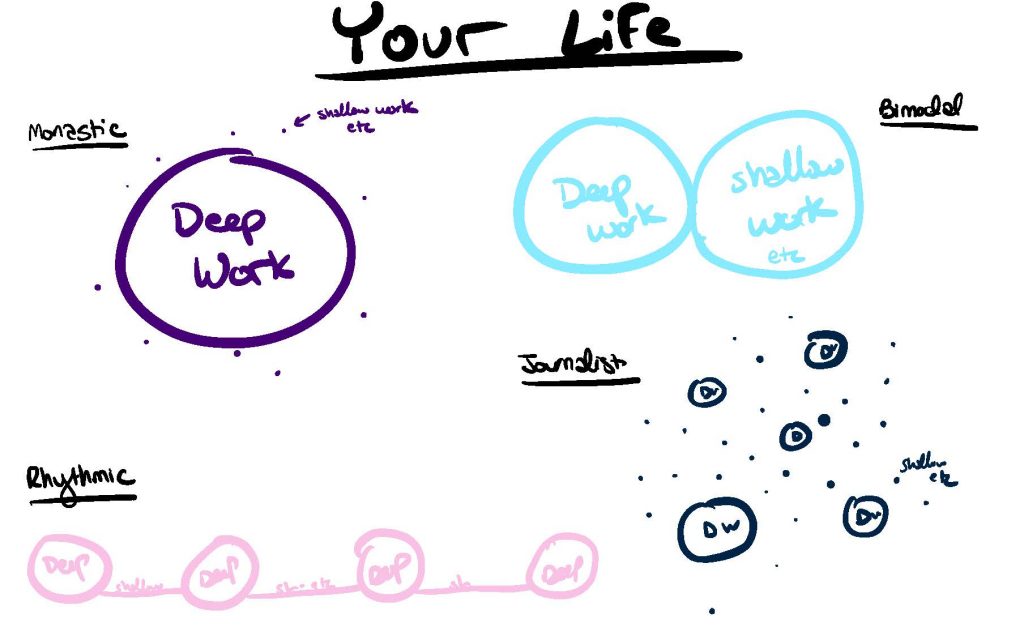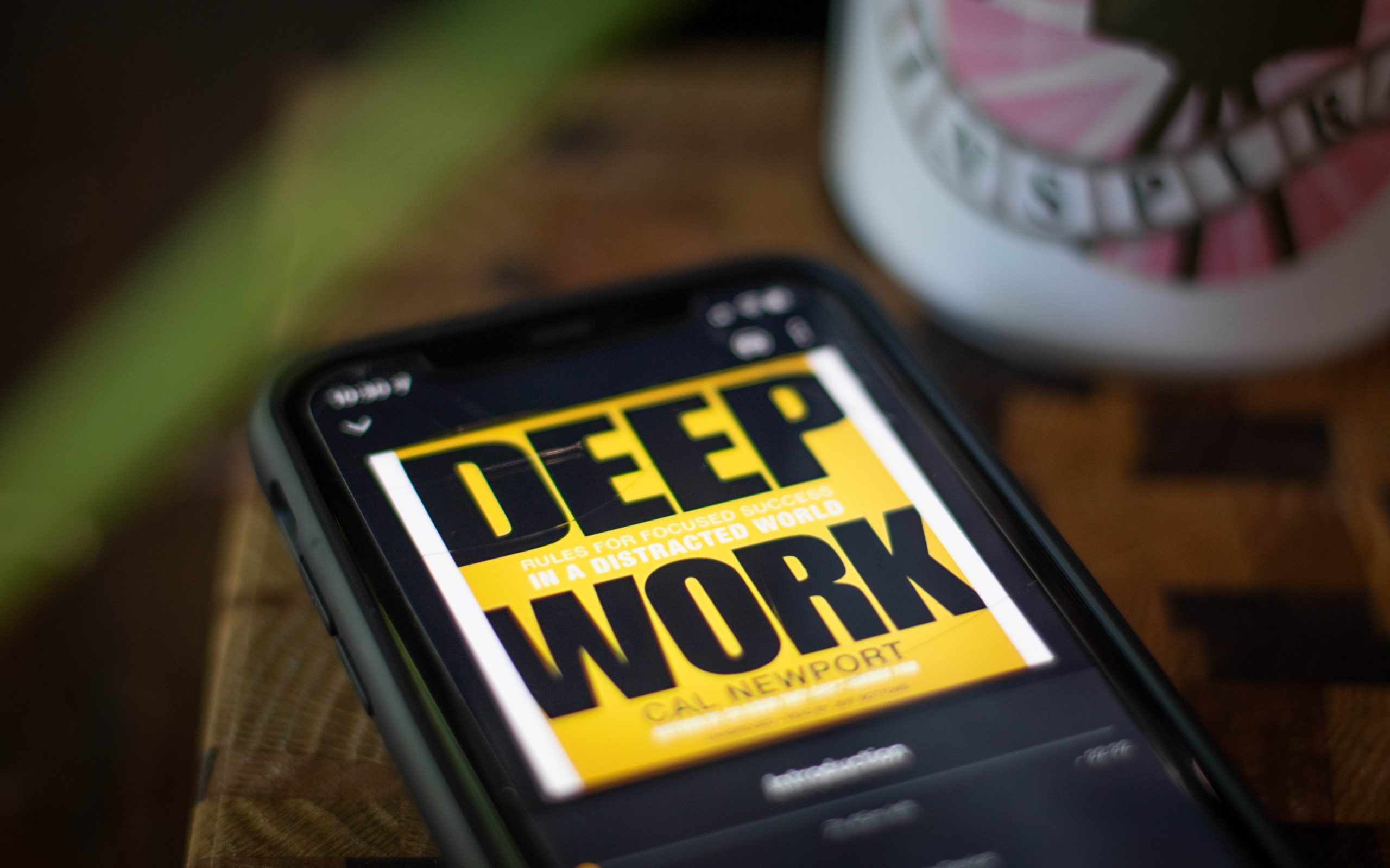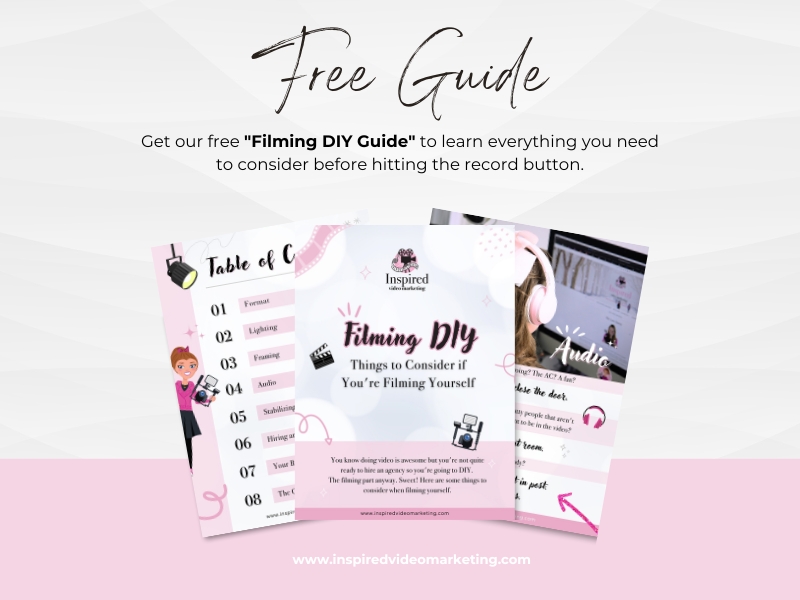The Impetus
As I’m adapting to a new living and work space, it’s been necessary to develop new living and work routines. Having routines has always seemed like such a drag to me. Who ACTUALLY liked the rigid structure of school where you had to be a one location at one time every. single. day? Booooooring.
Only, the life of the free-as-a-bird entrepreneur, while seemingly exciting and full of possibility, quickly devolves into procrastination of the deep by doing the shallow. No real work gets done but always “I’ll make just one more cup of coffee and then this time I’ll REALLY get to work” occurs. Oh, and the negative self-talk and anxious feelings are great, of course.
I’m starting to miss the days where I was expected at this place at this time to work on this project.
But not enough to get a job.
So. What’s the solution? I need to implement my own systems and routines built for success. And why flounder for what these are when we can turn toward those who’ve already done the work? Plus! They are willing to share their knowledge for some measly amounts of money. Alright. Here we go. First book on the list is to re-read Cal Newport’s Deep Work.
The Deep Work Hypothesis
But what IS deep work? In his own words, Newport describes deep work as “Professional activities performed in a state of distraction-free concentration that push your cognitive capabilities to their limit. These efforts create new value, improve your skill, and are hard to replicate.”
By contrast, he defines shallow work as, ” Non-cognitively demanding, logistical-style tasks, often performed while distracted. These efforts tend to not create much new value in the world and are easy to replicate.”
“The Deep Work Hypothesis: The ability to perform deep work is becoming increasingly rare at exactly the same time it is becoming increasingly valuable in our economy. As a consequence, the few who cultivate this skill, and then make it the core of their working life, will thrive.” –Cal Newport “Deep Work”
Of course, since he has written an entire book, he goes into his hypothesis and the data he has to back it up. For the purposes of a summary blog, we’re going to assume that what he posits is correct and go from there.
Think about what you do in your day-to-day. Some of your activities are going to be ones you can do while distracted: check social media, do your dishes, obsessively refresh your email, shoot off a quick email, half-heartedly attend a work meeting… and some are going to be tasks that require intense focus: code new software, work out some solutions to a deep rooted problem, write a proposal or in my case, film and edit a video.
In the shallow activities you can give half your focus and still do the task. In the deep activities, you must bring all your presence to bear if you’re going to accomplish the task sufficiently.
Two Abilities Crucial for Success in the New Economy
- The ability to quickly master hard things.
- The ability to produce at an elite level, in terms of both quality and speed
“… The two core abilities just described depend on your ability to perform deep work.”
Our success as time continues is going to correlate with our ability to go deep.
And yet, what do we find ourselves doing? For me, it’s been the easy stuff. I’m guessing all of us can identify with this to varying degrees as well.Newport has a theory, “The Principle of Least Resistance: In a business setting, without clear feedback on the impact of various behaviors to the bottom line, we will tend toward behaviors that are easiest in the moment.”
When we aren’t sure what the absolute best use of our time is, instead of rooting around to figure it out, we do the easy stuff.
And as bonus: doing lots of the easy stuff makes us look productive. Newport calls it “Busyness as Proxy for Productivity”.
And yet. Being able to say that we can check our business’s Facebook for new comments, email platform for new emails and phone for missed messages all within a minute doesn’t make us invaluable. It seems productive and it looks productive, especially if there is a message that we can quickly resolve and get a boost of dopamine, but it’s the lowest common denominator in terms of what’s important and what we could and probably should be doing.
Worse, all this shallow multi-tasking is taking a toll on us. The book references Sophie Leroy, a business professor, who wrote a paper introducing the concept called “attention residue”. When you switch from one activity to another, there is a lag in attention. There is a residue of your attention that is stuck on the first task as you enter the second one. The more activities we jump between, the more our attention lags behind like a computer with too many tabs open (guilty) AND too many apps open.
The more apps and tabs I’m using, the longer my computer takes to jump between each of them, and I have a pretty beefed up computer.
Of course, some shallow work needs to get done, BUT overall we’re doing too much of it, switching between shallow tasks too quickly and neglecting the real work, the work that leads to change and the work that makes our lives and the world more meaningful.
So. What does Newport suggest we do?
The Takeaways
So you’ve decided that you want to do some more deep work in your life, eh? Here are 5 of Cal Newport’s suggestions that I like and am implementing and hope you can too.
#1 What Is Your Depth Philosophy?
In Deep Work, Newport identifies 4 styles of deep work doers. He goes into the accounts of various people employing each style and the pros and cons of each. Based on your life now, choose which style of deep work could work the best for you.
A. Monastic Philosophy
“This philosophy attempts to maximize deep efforts by eliminating or radically minimizing shallow obligations.”
Translation: Can you focus intensely on ONE thing/project/pursuit and find a way to limit or delegate everything else in your life? Not for the faint of heart, this strategy requires you to have a well-defined and important professional goal you’re chasing after, and that most of your success comes from you being very good at this one thing. This allows you the ability to set boundaries on everything else that does not lead to you achieving said goal.
B. Bimodal Philosophy
“This philosophy asks that you divide your time, dedicating some clearly defined stretches to deep pursuits and leaving the rest open to everything else.”
Translation: During longer periods that you specify, like going on sabbatical to write your next academic paper/book, or renting a cabin in the woods for two weeks to write your novel, you go deep. During other stretches, you do life like a “normal person”.
C. Rhythmic Philosophy
“This philosophy argues that the easiest way to consistently start deep work sessions is to transform them into a simple regular habit. The goal, in other words, is to generate a rhythm for this work that removes the need for you to invest energy in deciding if and when you’re going to go deep.”
Translation: Go deep daily, or weekly at a specific time for specific lengths of time. Like, “Every morning from 5am-6am I will write my book.”
4. Journalist Philosophy
“I call this approach, in which you fit deep work wherever you can into your schedule, the journalist philosophy.”
Translation: Look at your week ahead and wherever you can find good 60-90-120 minute chunks of time to go deep, pencil them in. Or, perhaps something gets spontaneously cancelled, go deep right now.
This philosophy, Newport warns, is better suited for those who have already weaned themselves off distraction, as it’s quite easy to fall prey to the temptations of staying shallow if your structure for going deep is a little less, well, structured.
Aaaaand because I’m just super creative and skilled, I drew out my own representation of each of the philosophies. You don’t need to keep your “oohs” and “ahhs” to yourself.

This one was a big one. These next won’t be so big and long.
#2 Act on Lead Measures
In the book, Newport recommends we “Execute Like a Business” and to do that he provides the 4DX Framework. I won’t go into all of that, some of it is repeated in other sections and I really do suggest you read his book, but what stood out to me was “Act on Lead Measures”.
In general it’s easy to look at our “lag measures” (the thing we’re trying to improve) to tell us how we’re doing, but by the time we see changes in them, the behaviors taken to exact change have already happened and are gone.
We look at our sales and see they are either up or down, but that doesn’t tell us how they got there. So, what we need to do is look at our “lead measures” or, the new behaviors that will drive success on the lag measures. If we know that the more sales calls we make the more sales we’ll actually make, instead of measuring “sales” we can measure “calls made” or “hours spent calling prospects”.
Your time spent in a deep work state dedicated to your “Wildly Important” goal is a good “lead measure”.
#3 Be Lazy
I used to get down on myself that I couldn’t produce hour after hour like a non-emotional, non-fatiguing machine. In high school and college I did have some semblance of that go-go-go but it took physical, mental and emotional tolls.
An answer to being more productive is counter intuitive. Be lazy.
After I’ve gone deep for 90-120 minutes, my brain is cooked. When I take the dogs on a walk, read a fantasy book or journal for 15-30 minutes, I’m fresh and ready for another action packed round of depth. I’m guessing this probably has to do with clearing out the attention residue, as we introduced before. Like restarting your computer if its bugging out.
In addition, downtime assists in your ‘aha’ moments. (“Bored and Brilliant“ is a good book that goes more into this)
After you’ve input all your data, you need to let the machine (your subconscious brain) bounce the data around and spit out an answer that usually we can’t just do by thinking real hard.
So derp around. Be bored. Do nothing. And let your brain recharge and work its magic.
#4 Meditate Productively
While doing a shallow but necessary activity (walking the dogs, doing the laundry, washing dishes, driving), use the time to meditate and work toward the solution of a problem.
I find this to be difficult, I don’t have the skills built-up to keep so much in my working memory without looping to earlier conclusions, but it’s something I’m working on.
If we can get good at this, then nearly any time in our day can be spent doing the important work.
#5 Schedule Every Minute of Your Day
This also seemed awful and daunting to me at first.
- “If I plan out every minute I’m going to be locked in to these activities and being locked in is going to immediately make these activities a drag and I’m going to want to rebel. ” – Katie’s brain
- “If I wildly underestimate how long something is going to take, it’s going to mess up my whole schedule and I’m going to feel like a failure and say ‘who cares I’ve already blown today’ to the rest of my day and just eat ice cream and watch Lizzo’s ‘Watch Out For the Big Girls'” – also Katie’s brain (It’s a really great show, if you were wondering)
However. The way they go about this is forgiving and flexible. You plan out your day and then, as your day inevitably changes, you sit down with your calendar and in a column next to your original, you plan out what’s left of your day, and then when that changes, in the NEXT column you plan out what’s left of your day now.
As a result, you get a clearer picture of what is interrupting your day. You get a clearer picture of how long things actually take. You get a clearer picture of what you’re actually doing in a day.
Plus. You can schedule in buffer periods and breaks that can be used to finish a task that’s taking longer, or use it to walk around and meditate productively.
Audible Hopes You Have Enjoyed This Production
If you’ve read this blog, you’re seeing the results of all of these strategies put into action. I’m going to continue to implement them, tweak them, read new books and try new strategies to make my life and my business the most effective it can be. I’m also going to share what I find out with you so that you can live your most inspired life and work your best in whatever business you are in.
I’d be curious to hear if you try some of these out, or if you read the book and have your own takeaways.
Until next time,





Leave a Reply